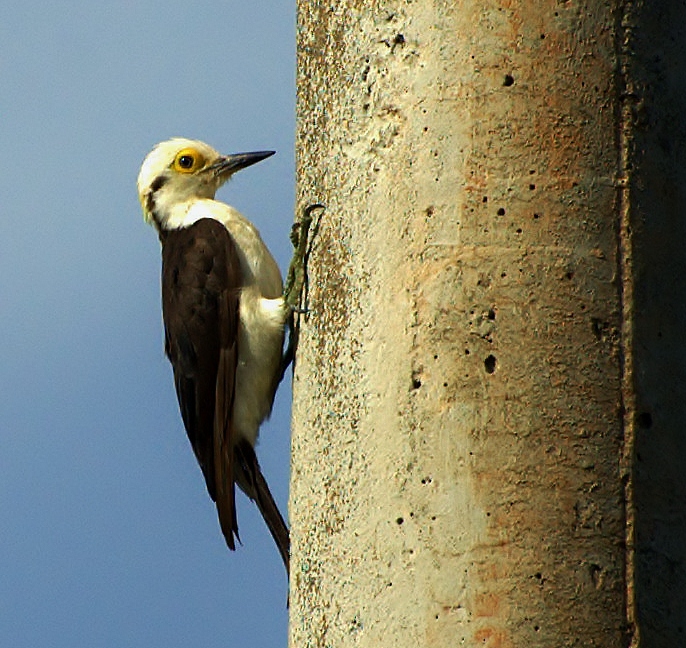Melanerpes candidus
 |
| Photo by Dario Sanches (Wikipedia) |
Common name:
white woodpecker (en); pica-pau-branco (pt); pic dominicain (fr); carpintero blanco (es); weißspecht (de)
Taxonomy:
Order Piciformes
Family Picidae
Range:
This South American species is found from French Guyana, in the north, through most of Brazil and into southern Peru, Bolivia and northern Argentina.
Size:
These birds are 24-29 cm long and weigh 98-136 g.
Habitat:
The white woodpecker is mostly found in dry savannas and dry tropical forests, but also in dry grasslands and scrublands with some trees, moist forests, agricultural fields, palm groves, orchards and exotic plantations. they occur from sea level up to an altitude of 2.200 m.
Diet:
They feed on fruits, seeds and insects and are also known to eat honey from bee hives. Their insect prey are mostly Hymenoptera, namely leaf-cutting ants Acromyrmexi, other ants, the wasp Polybia scutellaris and the stingless bee Trigona spinipes.
Breeding:
White woodpeckers breed in September-December. They sometimes breed communally, in groups of 5-8 birds. The nest is a hole in tree or stump, or sometimes a hole among rocks. there the female lays 3-4 white eggs, which are incubated by both parents. there is no information regarding the length of the incubation period. The chicks fledge 35-36 days after hatching.
Conservation:
IUCN status – LC (Least Concern)
This species has a very large breeding range and is described as uncommon and patchily distributed. The population appears to have expanded its range in the south since the early 1990’s. In some areas they may be persecuted due to the damage they cause in orchards and fruit plantations, and in some cases trapped for the cage bird market, but overall the white woodpecker is not threatened.







